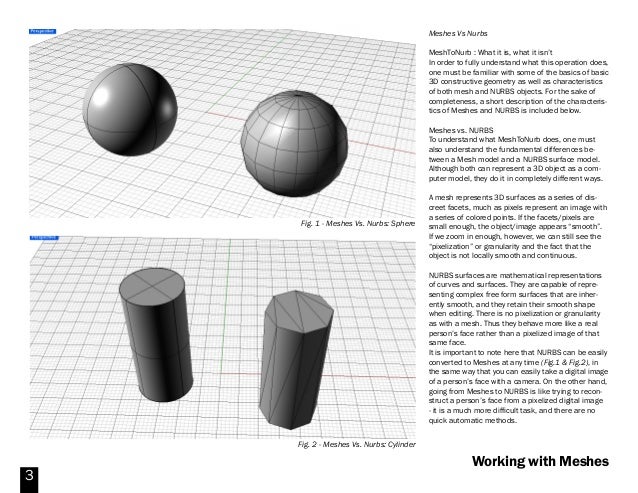
I am guessing the Zbrush autoretopo algorithm will probably yield better results for this than the current 3D-Coat autoretopo algorithm. If you are using subsurface there are a few applications that wil convert a subsurface mesh cage to nurbs, Maya and rhino both do it, Im not sure if rhino needs a plugin as ive only ever had meshes converted through maya.
#Mesh to nurbs download#
Download this Premium Vector about Cute rhino with. For prototypeing I have exported STL files directly from blender. Use the robust QuadRemesh algorithm to create a beautiful quad mesh from NURBS geometry or meshes. The contours convert the voxels into NURBS or Polygon mesh surfaces. no, blender does not have a convert to surface button yet. In the edit buttons (F9) you should see a button called Resol U: and another button V: to the right of it. You can change the density of the new mesh by doing one or both of the following: Before conversion, enter edit mode and select all the points.

#Mesh to nurbs software#
This software can convert an open mesh to a single NURBS surface just by clicking one button.

In the early 1970s, B or Basis splines were created (There are an infinite number of splines.) as a convenient way to define smooth curves and surfaces interactively on the. Mesh to single NURBS is a standalone application. They are equations used to define curves or surfaces that simulate the designers batten in terms of stiffness and continuity. It seems to do a much better job with a subdivision surface with nice edgeflow as opposed to an autoretopo mesh with bad (illogical) edgeflow. NURBS and Polygonal meshes can be considered as interchangeable BREP data structures. The Alt-C method is the only way to make a surface into a mesh. NURBs are Non-Uniform, Rational, B-splines. I think it should be a priority of your plug-in to get the best possible logical placement of nurbs curves after the conversion, instead of just random patches stitched together all over the body. So, if we used edgeloop guides when performing automatic retopo in 3D-Coat, then I guess we would get a nicer resultant mesh after the nurbs conversion.

It looks like the conversion to nurbs is dependent on the edgeflow of the polygonal mesh, am I right? For example, the rhino model in your demo would already have a nice curve around the tail/head/leg areas if there was an edgeloop there on the original polygonal mesh, correct? That way it would be easier to break the mesh up into nice parts or perform edits when it becomes a nurbs object.


 0 kommentar(er)
0 kommentar(er)
